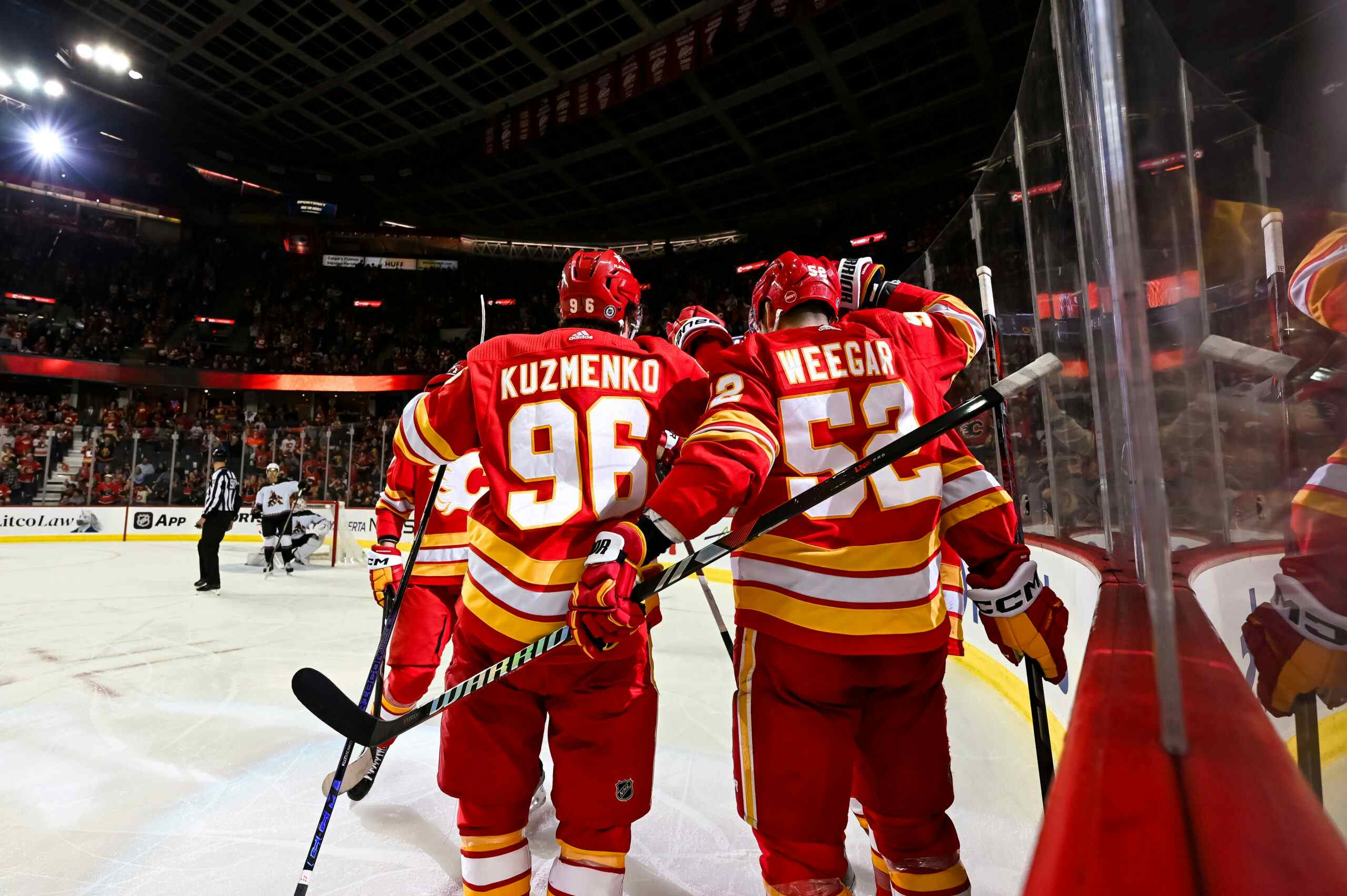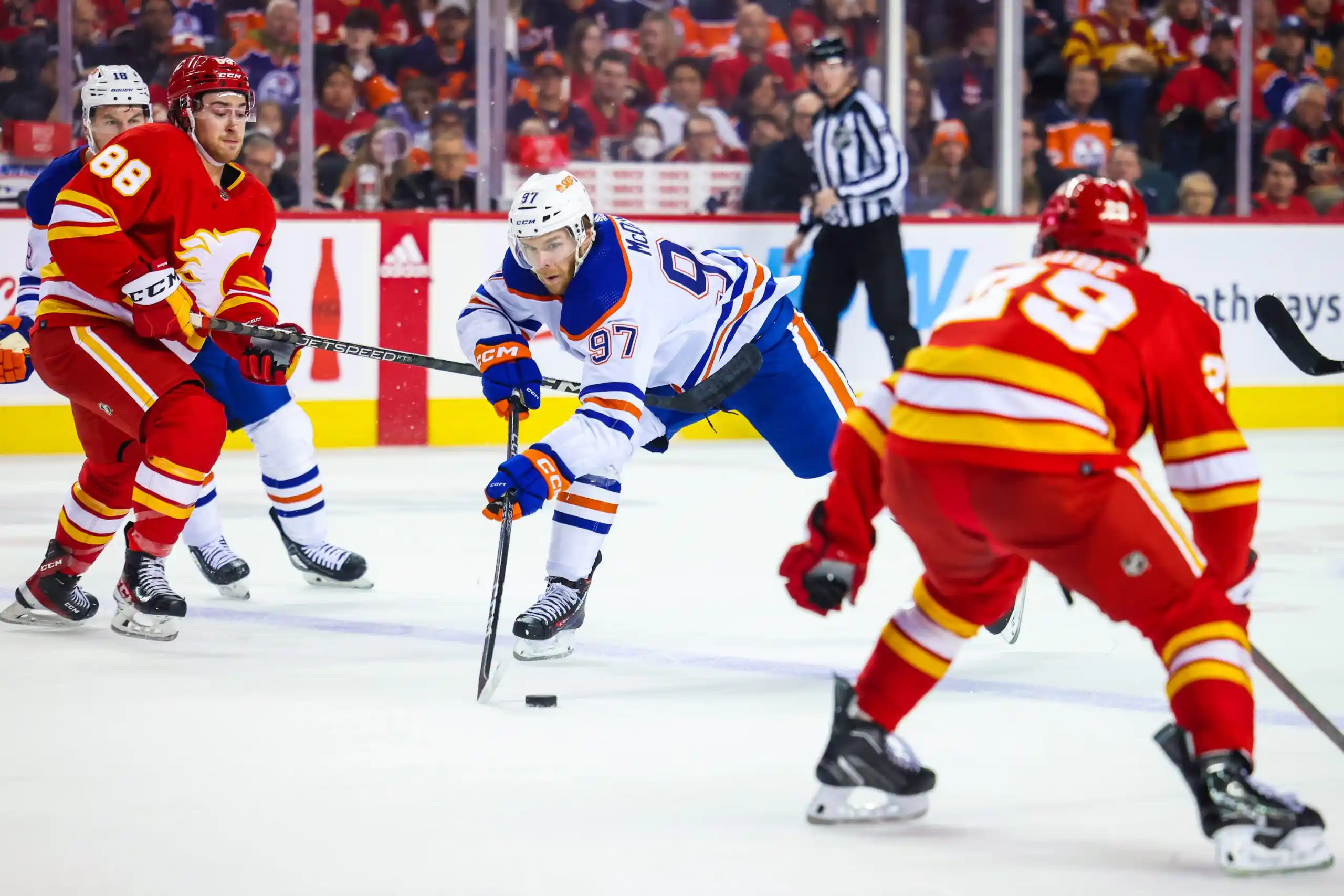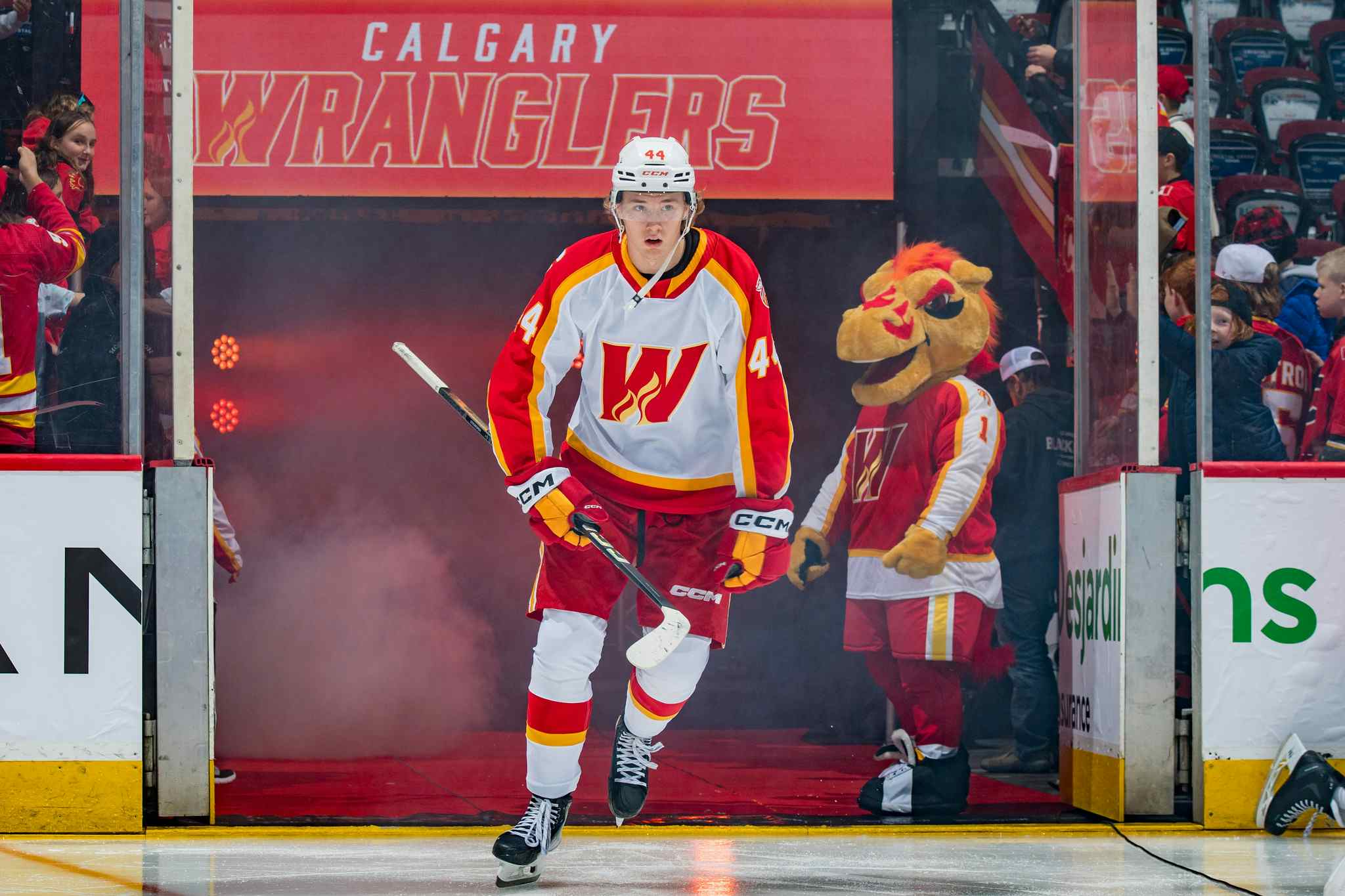Flames With and Without Backlund
By Kent Wilson
11 years agoMikael Backlund has been injured since the 8th game of the season. He is scheduled to return sometime this month and the team has played about 10-games without him, so let’s take a look at what his return might mean for the club.
The Flames stumbled out of the gate, again, but a great deal of their poor results can be attributed to terrible percentages, particularly near-league worst goaltending. As we discussed earlier in the season, however, Calgary actually had surprisingly strong shot and possession numbers through the first five-to-ten games or so. In fact, the Flames were a top-5 team in the league by these sorts of measures at the time. That’s good, because teams that rely on outshooting rather than percentages for their success almost always enjoy greater long-term success. Just ask the 2011-12 Minnesota Wild.
Unfortunately, Calgary’s underlying numbers have sunk rapidly since Backlund was injured. They are currently 16th in the league in terms of fenwick close (a possession stat that excludes block shots and corrects for playing to score effects) at 50.78, which is just barely treading water. If that downward trend continues, they’ll be in the red by this weekend.
With or Without You
We can look at a number metrics beyond fenwick to determine how/if Backlund’s absense has affected the team. First up, here is how the Flames scoring chances have fallen with and without Backs on the roster:
| With Backlund | For | Against | ES For | ES Against |
|---|---|---|---|---|
| game 2 ANA | 18 | 17 | 16 | 16 |
| game 3 VAN | 14 | 14 | 11 | 11 |
| game 4 EDM | 18 | 13 | 14 | 10 |
| Game 6 CHI | 35 | 14 | 23 | 11 |
| Game 7 DET | 12 | 12 | 10 | 8 |
| Game 8 CBJ | 16 | 9 | 14 | 6 |
| Total | 113 | 79 | 88 | 62 |
The above table shows total chances for and against as well as chances at even strength. As you can see, the Flames were above water in both respects, particularly at ES where they were +26 in the 6 games counted (I missed the first contest of the year and another was counted by Justin).
That total is propped up by the Chicago game where the Flames put together their most dominant period in recent memory, at least in terms of shots and chances. They were +12 at even strength that night, pretty much entirely because Backlund’s line finished +14, -2.
Still, Calgary was never in the red in this sample and above water in 4 of the six games by my count.
Now, here’s how they have done without Backs:
| Without Backlund | For | Against | ES For | ES Against |
|---|---|---|---|---|
| Game 9 VAN | 13 | 20 | 11 | 16 |
| Game 10 MIN | 10 | 8 | 8 | 6 |
| Game 11 DAL | 20 | 18 | 18 | 12 |
| Game 12 STL | 15 | 18 | 12 | 16 |
| Game 13 DAL | 19 | 11 | 14 | 8 |
| Game 14 PHX | 15 | 16 | 13 | 13 |
| Game 15 LAK | 18 | 14 | 13 | 11 |
| Game 16 PHX | 17 | 15 | 15 | 13 |
| Game 17 MIN | 13 | 25 | 5 | 14 |
| Game 18 VAN | 16 | 19 | 12 | 17 |
| Total | 156 | 164 | 121 | 126 |
Obviously not as good. Calgary has marginally won the chance count 5 times in this sample but are in the red overall. They were also absolutely pummeled by St. Louis and Los Angeles through the first half of those losses and then pulled closer when their opponents sat back to protect the lead.
The difference at ES with and without Backlund for the Flames this year is +26/-5 or +31. Per game, that’s +4.33/-0.6 or a delta of +4.93 chances differential/game.
Discussion
I hesitate to attribute the entire difference to Mikael Backlund, even as good as he was playing in the early going. Calgary played strong fundamentally to open the season and had a pretty favorable, home-heavy schedule. There’s no doubt at least some of the difference is due to natural variance via chance or circumstance. Also, I don’t correct for playing to score effects in my chance counts, so there’s a possibility that has skewed things somewhat. Teams with leads tend to sit back and allow shots/chances, while chasing clubs amp up their efforts, inflating their totals.
Still, there’s evidence that Backlund was a key figure nevertheless. In 8 games, his relative corsi (possession rate relative to the rest of the team) was +22.4 corsi/60. In other words, the Flames directed 23.87 more shots at the net than they gave up per hour when Backlund was on the ice. When he was on the bench, that rate plummeted to just 1.47/60. That’s a huge difference.
In addition, if you peruse Backlund’s individual player WOWY tables here, you’ll notice almost everyone who played with Backlund saw his possession rate increase. Some notables include:
- Stempniak: 65% with, 49% without
- Cammalleri: 61% with, 47% without
- Glencross: 61% with, 52% without
- Baertschi: 56% with, 42% without
Of course, aside from the small sample caveat and schedule issues mentioned, this analysis also points to how poor the Flames alternatives at center are absent Backlund thanks to their lackluster depth chart.
Conclusion
None of this suggests the return of Backlund to active duty will instantly turn the Flames around – they will need at least average or better goaltending to do that and a single skater has next to no impact on a goaltenders SV% from game-to-game.
Still, the kid was tilting the ice in the Flames favor to a non-trivial degree when he was around, something that has more or less evaporated since he left. HIs return this month may be too late or not enough to save Calgary’s playoff hopes by that time, but this is pertinent information to keep in mind if Feaster and company are making decisions about who to keep and what direction to go around the deadline.
Recent articles from Kent Wilson





